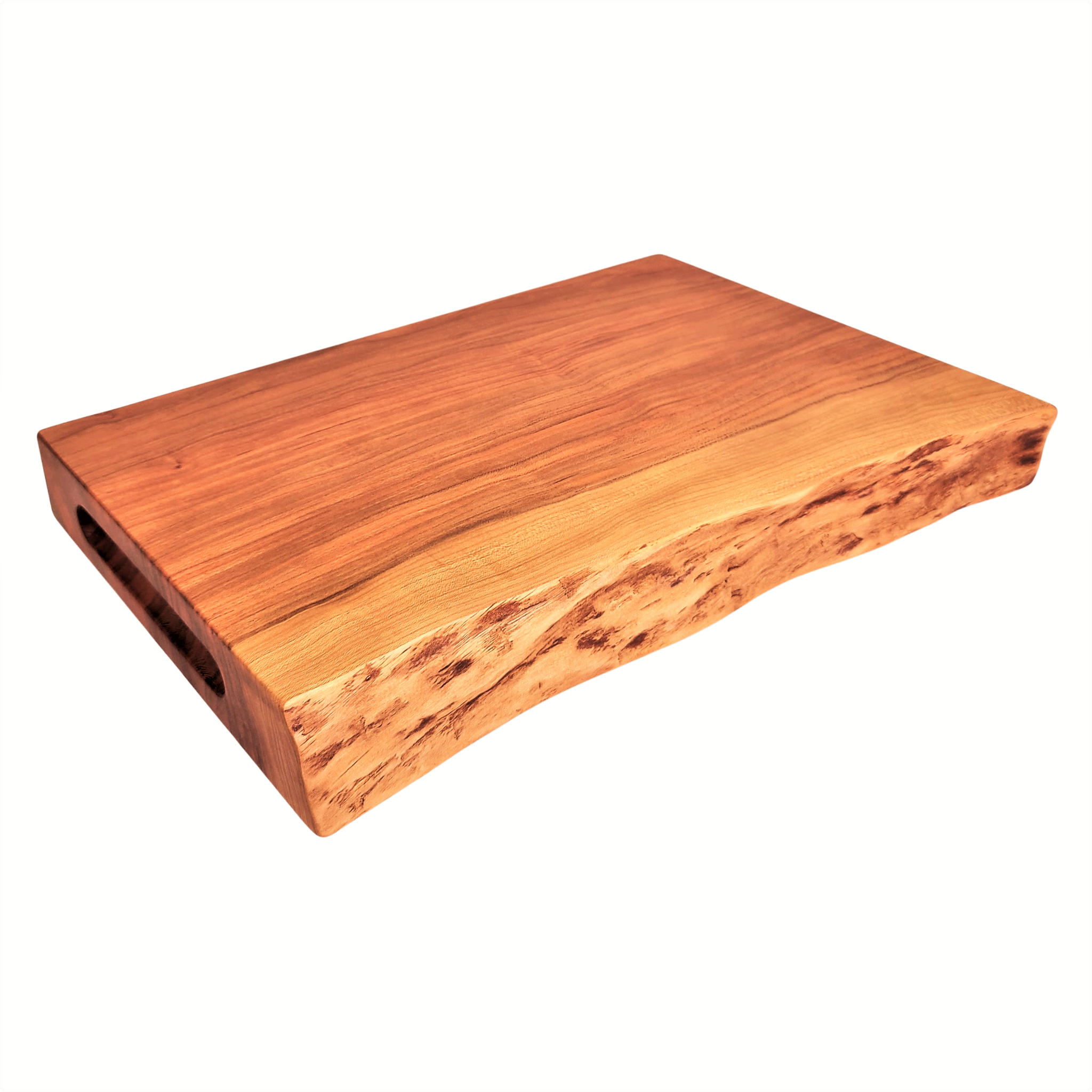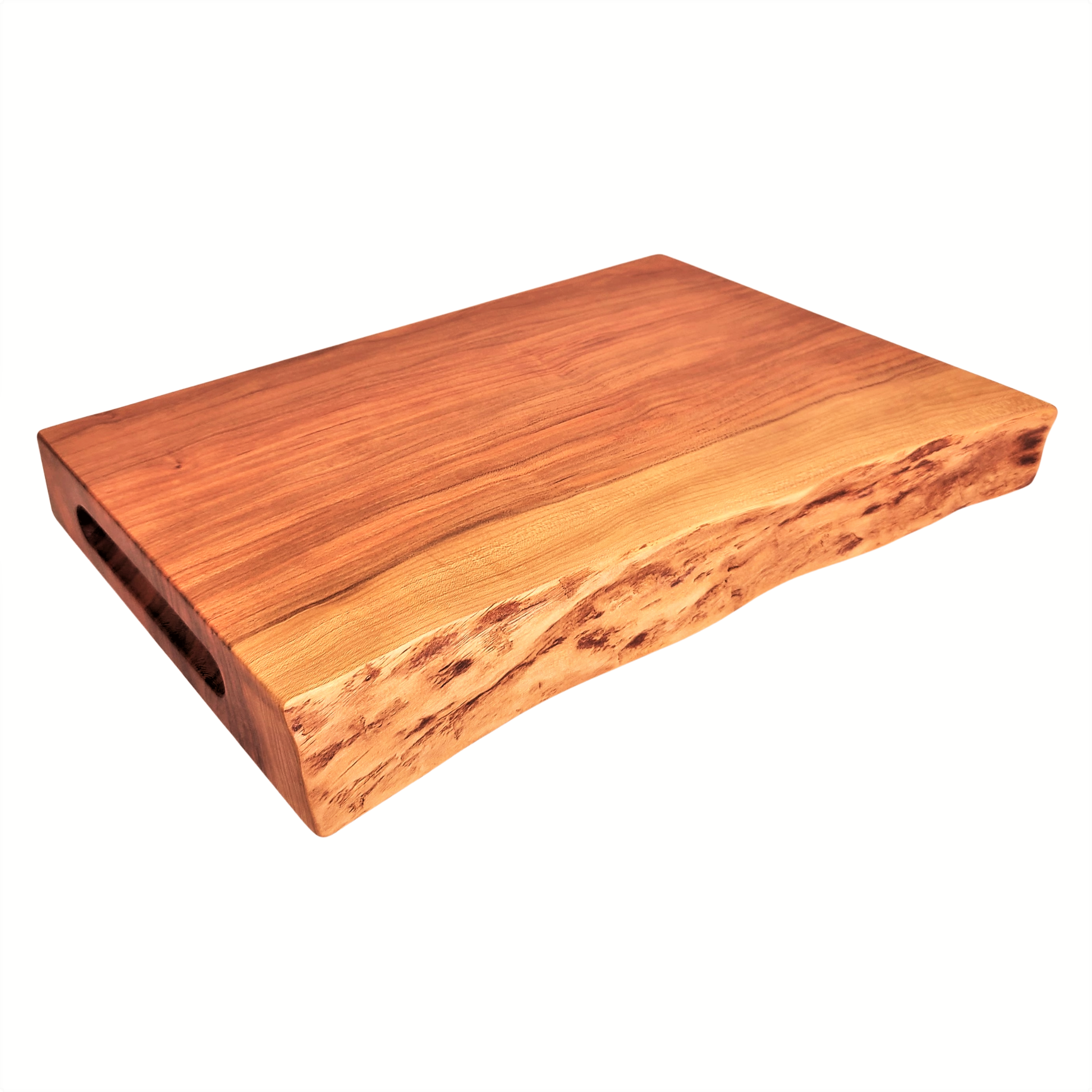If you’re wondering about the suitability of black cherry wood for cutting boards, you’ve come to the right place! Black cherry wood is a popular choice for many woodworking projects, but what about its performance in the kitchen?
When it comes to cutting boards, we want a material that is not only aesthetically pleasing but also durable and safe for food preparation. In this article, we’ll explore whether black cherry wood meets these requirements and whether it’s a smart choice for your kitchen.
So, without further ado, let’s dive into the world of cutting boards and discover if black cherry wood is up to the task!

Is Black Cherry Wood Good for Cutting Boards? The Ultimate Guide
When it comes to choosing the right wood for your cutting board, several options are available. One popular choice is black cherry wood. Known for its rich color and attractive grain patterns, black cherry wood has gained popularity in the world of cutting boards. But is black cherry wood actually good for cutting boards? In this comprehensive guide, we will explore the qualities of black cherry wood, its benefits, and potential drawbacks.
The Qualities of Black Cherry Wood
Black cherry wood, scientifically known as Prunus serotina, is native to North America. Its heartwood varies from light reddish-brown to a deep burgundy color, often featuring streaks of sapwood. The wood has a straight grain with a smooth texture, making it pleasing to touch and visually appealing. Additionally, black cherry wood has natural oils that help protect it from moisture, making it a suitable choice for cutting boards.
One of the standout qualities of black cherry wood is its natural resistance to bacteria and fungi. The wood contains natural compounds called polyphenols, which inhibit the growth of microorganisms. This antimicrobial property makes black cherry wood an excellent material for cutting boards, as it reduces the risk of cross-contamination and ensures food safety. Furthermore, the tight cell structure of the wood minimizes the absorption of liquid and odors, making it easier to clean and maintain.
In terms of hardness, black cherry wood ranks moderately on the Janka hardness scale, with a rating of approximately 950. While it is not as hard as some other woods commonly used for cutting boards, such as hard maple or walnut, black cherry wood still offers sufficient durability and resistance to knife marks. With proper care and maintenance, a cutting board made from black cherry wood can last for years.
The Benefits of Black Cherry Wood Cutting Boards
1. Natural Antimicrobial Properties: As mentioned earlier, black cherry wood naturally inhibits the growth of bacteria and fungi, making it a hygienic choice for cutting boards. This quality helps minimize the risk of foodborne illnesses and ensures that your cutting board remains clean and safe to use.
2. Easy to Clean and Maintain: Thanks to its tight cell structure, black cherry wood cutting boards are relatively easy to clean. Unlike some other materials, black cherry wood does not easily absorb liquids or odors, reducing the chances of staining or foul smells. Regular oiling can help maintain the beauty and longevity of the board.
3. Aesthetically Pleasing: Black cherry wood is known for its rich color and beautiful grain patterns. Using a black cherry wood cutting board can add an elegant touch to your kitchen and make your cooking experience more enjoyable.
Drawbacks of Black Cherry Wood Cutting Boards
1. Moderate Hardness: While black cherry wood is durable enough for cutting board use, it is not as hard as some other woods commonly used for this purpose. As a result, it may show knife marks more easily. However, with proper care and periodic sanding, these marks can be minimized.
2. Susceptible to UV Damage: Like many other woods, black cherry wood can be sensitive to sunlight exposure. Prolonged exposure to UV rays can cause the wood to darken or change in color over time. To prevent this, it is recommended to store your black cherry wood cutting board away from direct sunlight.
3. Availability and Cost: Black cherry wood may be less readily available and more expensive compared to other woods commonly used for cutting boards. However, the unique beauty and qualities of this wood make it a worthwhile investment for those who appreciate its distinct characteristics.
How to Care for Black Cherry Wood Cutting Boards
To ensure the longevity of your black cherry wood cutting board and maintain its natural beauty, follow these tips:
1. Season the Board
Before using your black cherry wood cutting board for the first time, season it with a food-safe mineral oil or a specially formulated cutting board oil. This will help protect the wood from drying out and prevent staining and moisture absorption.
2. Regularly Oil the Board
To keep the black cherry wood well-nourished and moisturized, apply a thin layer of mineral oil or cutting board oil every few weeks or as needed. This will help prevent the wood from cracking, warping, or developing bacteria-friendly moisture pockets.
3. Clean with Mild Soap and Warm Water
After each use, clean your black cherry wood cutting board with mild dish soap and warm water. Avoid using harsh cleaning agents or immersing the board in water for prolonged periods, as this can be detrimental to the wood’s longevity.
4. Dry Properly
After washing your cutting board, pat it dry with a clean towel and leave it upright or horizontally to air dry completely. Avoid stacking or storing the board in a damp environment, as this can lead to mold or mildew growth.
5. Sand and Refinish When Necessary
Over time, your black cherry wood cutting board may develop scratches or signs of wear. To keep it in optimal condition, periodically sand the surface with fine-grit sandpaper and reapply a fresh coat of food-safe mineral oil or cutting board oil. This will refresh the appearance and provide protection against moisture.
Conclusion
Black cherry wood is indeed a good choice for cutting boards, thanks to its natural antimicrobial properties, ease of cleaning, and aesthetically pleasing qualities. While it may not be as hard as some other woods, proper care and maintenance can ensure its longevity and durability. By following the recommended care guidelines and utilizing the unique properties of black cherry wood, you can enjoy the benefits of a high-quality cutting board in your kitchen.
Key Takeaways: Is Black Cherry Wood Good for Cutting Boards?
- Black cherry wood is a popular choice for cutting boards due to its natural beauty.
- It is a hardwood, making it durable and resistant to scratches.
- Black cherry wood has natural antimicrobial properties that help prevent the growth of bacteria on the surface of the cutting board.
- However, it is not as hard as some other hardwoods, so it may be prone to dents and cuts over time.
- Regular maintenance, such as oiling the cutting board, can help extend its lifespan and keep it in good condition.
Frequently Asked Questions
When it comes to choosing the right wood for cutting boards, black cherry wood is a popular option. Here are some commonly asked questions and answers about using black cherry wood for cutting boards.
1. What are the benefits of using black cherry wood for cutting boards?
Black cherry wood is an excellent choice for cutting boards due to its durability and natural resistance to bacteria. The tight grain of the wood helps prevent deep cuts and grooves from forming, making it easier to clean and maintain. Additionally, black cherry wood has a beautiful reddish-brown color that adds an elegant touch to your kitchen.
Moreover, this type of wood is known for its stability and resistance to warping or splitting, ensuring that your cutting board will last for years to come. The natural oils present in black cherry wood also help to keep it moisturized and prevent it from drying out.
2. Is black cherry wood safe for cutting and food preparation?
Yes, black cherry wood is safe for cutting and food preparation. It is a non-toxic wood that does not release harmful chemicals into the food. However, it is important to properly clean and sanitize your cutting board after each use to ensure food safety.
As with any cutting board, it is recommended to use separate boards for raw meat, poultry, and fish to minimize the risk of cross-contamination. Regularly oiling your black cherry wood cutting board will help maintain its integrity and prevent absorption of food odors.
3. Can black cherry wood handle heavy-duty cutting tasks?
Black cherry wood is a sturdy and durable wood that can handle heavy-duty cutting tasks. Its hardness and density make it resistant to deep cuts and scratches, allowing it to withstand the pressure of sharp knives. However, it is still important to use proper cutting techniques and avoid excessive force to prolong the lifespan of your cutting board.
If you frequently work with hard materials or need a cutting board for commercial use, it may be beneficial to choose a thicker cut or consider reinforcing the board with additional supports to ensure maximum durability.
4. How should I care for and maintain my black cherry wood cutting board?
To care for your black cherry wood cutting board, it is recommended to regularly clean it with warm soapy water and a soft sponge or cloth. Avoid using harsh chemicals or abrasive cleaners, as they can damage the wood. After cleaning, thoroughly dry the board to prevent moisture from seeping in.
Apply a food-safe mineral oil or cutting board oil regularly to keep the wood moisturized and prevent it from drying out and cracking. This will also help maintain the natural beauty and longevity of the board. Additionally, avoid exposing the cutting board to direct sunlight or extreme heat, as this can cause warping or discoloration.
5. Are there any alternatives to black cherry wood for cutting boards?
Yes, there are several alternatives to black cherry wood for cutting boards. Some popular choices include maple, walnut, bamboo, and acacia wood. Each type of wood has its own unique characteristics and benefits, so it ultimately comes down to personal preference.
Maple is a durable and dense wood that is often used in commercial kitchens. Walnut offers a rich, dark color and is known for its strength. Bamboo is a sustainable and eco-friendly option. Acacia wood is prized for its natural beauty and striking grain patterns. Consider your needs and preferences, as well as the specific properties of each wood, when choosing an alternative to black cherry wood.

Summary
So, is black cherry wood good for cutting boards? Although black cherry wood is visually appealing and has natural antimicrobial properties, it may not be the best choice for a cutting board due to its softness and tendency to show knife marks. There are other hardwood options, such as maple or walnut, that are more durable and better suited for cutting boards. It’s essential to consider factors like hardness, grain pattern, and maintenance requirements when choosing the right wood for a cutting board.
